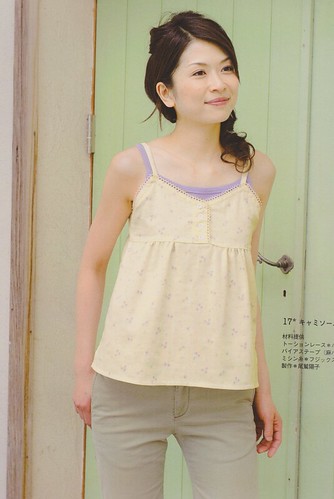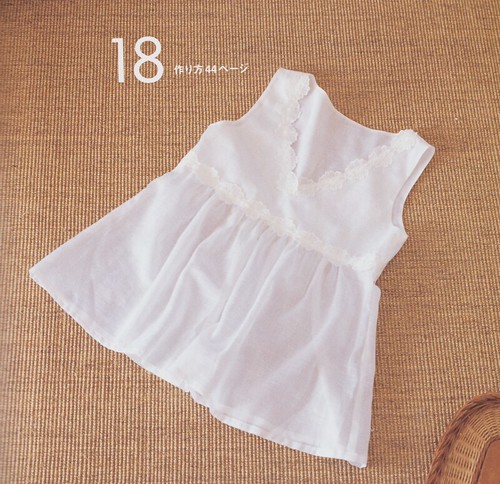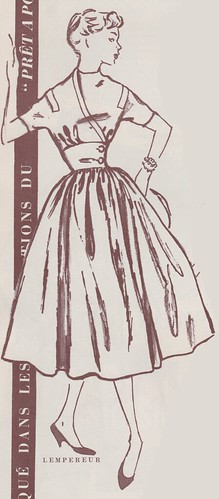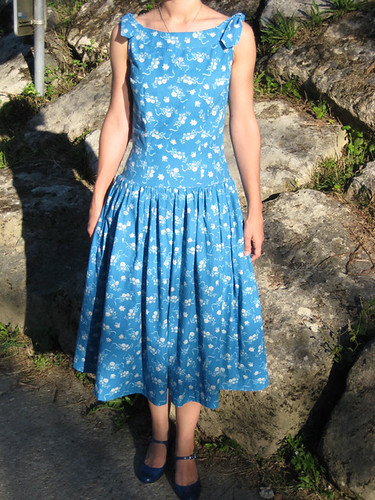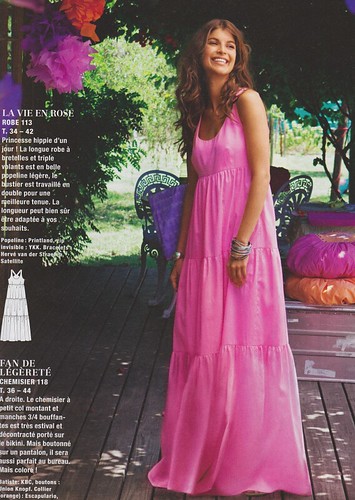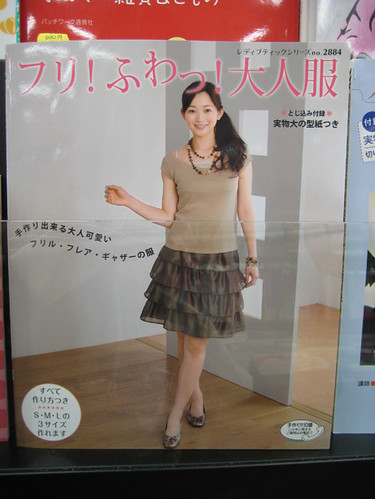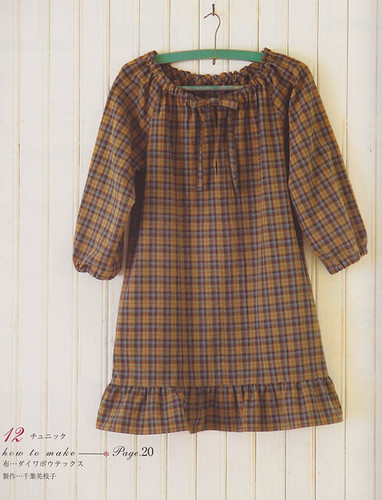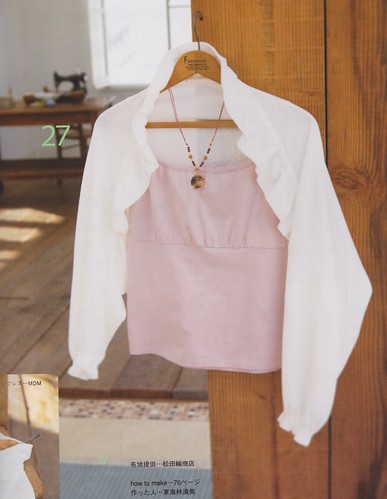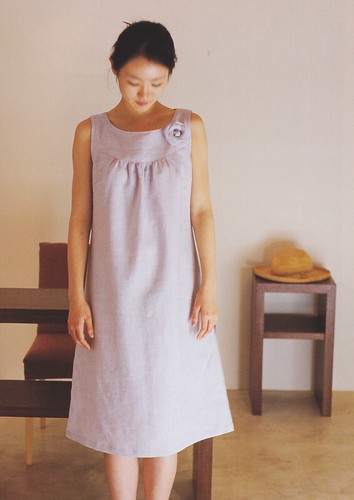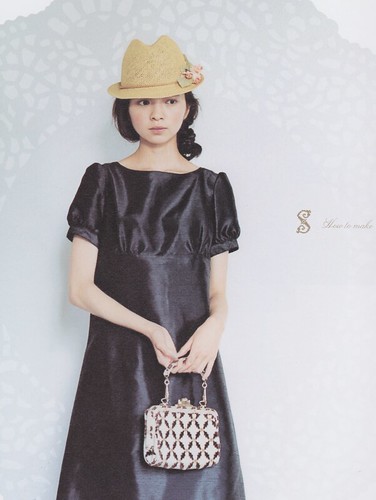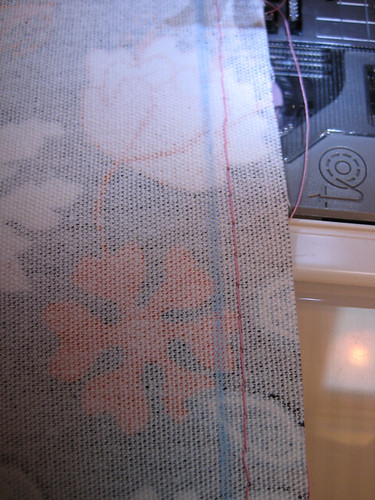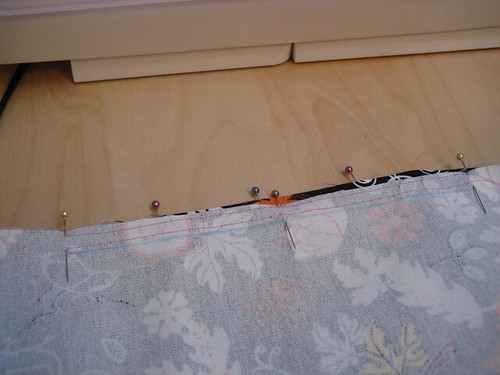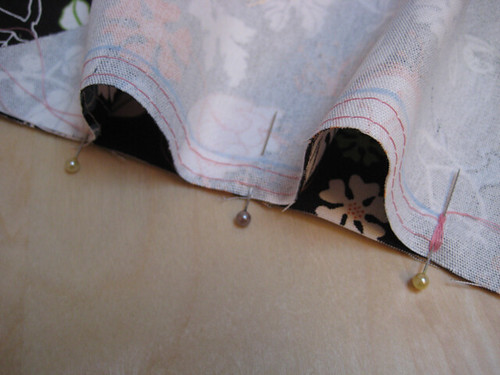After my last post I wanted to dive more deeply into the world of gathers, and make a follow-up post on how they are used in clothing. It turns out there is quite a lot to say about them, so this will be a series of two or three posts. First we’ll see the most common uses of gathers. Everyone probably already know about them, but I thought it would be nice to start with simple pieces with gathers uses listed by type. Then we’ll see some more original pieces. Most of the pictures are from my books and magazines collection (if you click on them you’ll go to my Flickr where I listed the sources).
At the waistline
The goal here is to have a fitted garment at the waistline that will get fuller at the bottom. I think it’s one of the most common use of gathers, with ruffles and puffy sleeves.
Empire waist
Small gathers so that the top isn’t very wide
This version has more gathers, so that the skirt part is fuller
Natural waist
Full gathered skirt are a common thing in fashion from the 40′s, 50′s and early 60′s. I love that type of skirts! Of course they were also commonly used in more ancient history.
Full gathered skirt on a 1957 dress
Low waist
You can find a lot of those in fashion from the 50′s also, with the “long torso” trend where the waistline was below the waist. That’s what I used for my blue 50′s dress last year:
Today it’s most commonly used in skirts where the gathers start under a yoke, see the part about yoke.
Tiered skirts & ruffles
Gathers are used to make tiered or ruffle skirts. Ruffles can also be added to different parts of a garment as an embellishment.
Dress with a tiered skirt.
Ruffle skirt
Ruffle at the bottom or a tunic, dress or skirt
Ruffle at the bottom of sleeves
A ruffle was added to the neckline of this bolero, which makes it look at little fancier
Under a yoke
Top
Bottom
You can also have yokes in skirts, which make the gathers start below the waist, around the hips. That makes the skirt full without having to much thickness at the waist. See this example by Eolune.
At the neckline
Here the gathers embellish the neckline and give a little fullness to the top.
At the bust
You can also use gathers to shape the bust part of an empire waist dress or top.
At the sleeves
Gathers can be at the sleeve cap to make it stand up a little, or at the bottom to tighten it around the arm. This creates a nice puffy sleeve. You can see an example of that on the last picture.
I hope you enjoyed this journey in the world of gathers as much as I enjoyed researching it for you. If you have common or uncommon pieces with gathers to share, please leave a common I’d love to hear about it!

